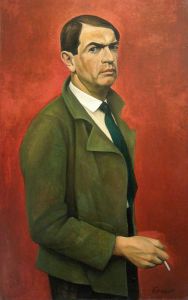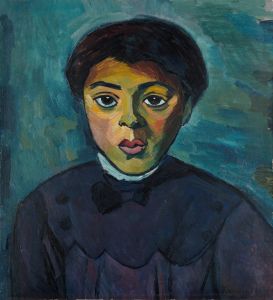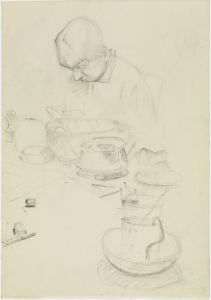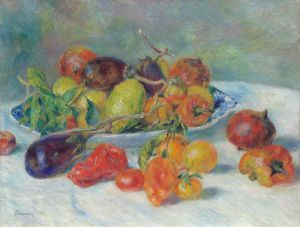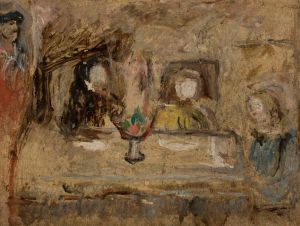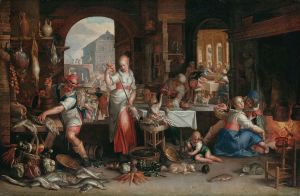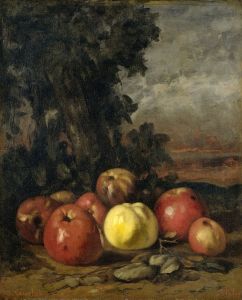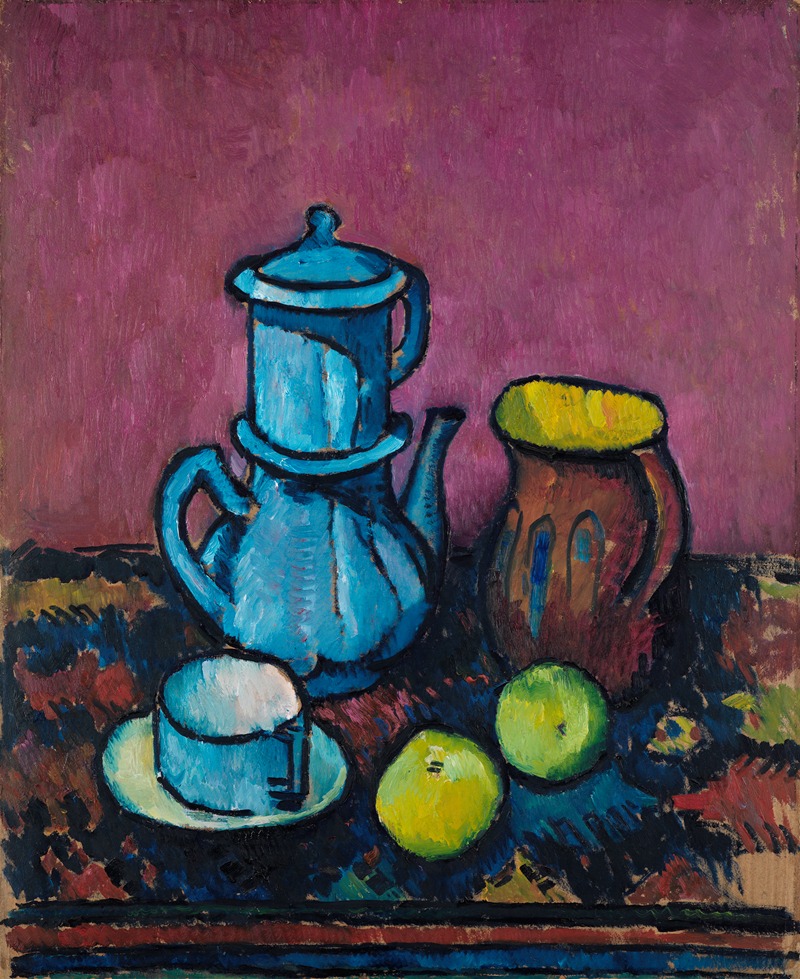
Still life with coffee tableware and apples
A hand-painted replica of Alexander Kanoldt’s masterpiece Still life with coffee tableware and apples, meticulously crafted by professional artists to capture the true essence of the original. Each piece is created with museum-quality canvas and rare mineral pigments, carefully painted by experienced artists with delicate brushstrokes and rich, layered colors to perfectly recreate the texture of the original artwork. Unlike machine-printed reproductions, this hand-painted version brings the painting to life, infused with the artist’s emotions and skill in every stroke. Whether for personal collection or home decoration, it instantly elevates the artistic atmosphere of any space.
Alexander Kanoldt's painting Still Life with Coffee Tableware and Apples is a notable example of the artist's work within the context of the New Objectivity (Neue Sachlichkeit) movement, which emerged in Germany during the 1920s. Kanoldt, born in 1881 in Karlsruhe, Germany, was a prominent figure in this movement, which sought to depict reality with a detached, precise, and often stark clarity, in contrast to the emotional and expressive tendencies of earlier artistic styles such as Expressionism.
The painting features a meticulously arranged composition of everyday objects, including coffee tableware and apples, presented in a calm and orderly manner. Kanoldt's approach to still life reflects the influence of Italian Renaissance art, particularly in his use of geometric forms and careful attention to spatial relationships. The objects in the painting are rendered with a high degree of realism, emphasizing their material qualities and textures. The subdued color palette and the absence of any overt emotional or narrative elements are characteristic of the New Objectivity style, which often focused on the mundane and the ordinary as subjects for artistic exploration.
Kanoldt's work during this period was shaped by the broader cultural and social context of post-World War I Germany. The New Objectivity movement arose as a reaction to the chaos and upheaval of the war, with artists seeking to create art that was grounded in reality and free from romantic or idealistic embellishments. Kanoldt's still lifes, including Still Life with Coffee Tableware and Apples, exemplify this ethos through their precise and unembellished depiction of everyday objects.
While specific details about the creation date or the current location of Still Life with Coffee Tableware and Apples are not readily available, the painting is often cited as an important example of Kanoldt's contribution to the New Objectivity movement. His work, along with that of other artists in the movement, played a significant role in shaping the artistic landscape of Weimar Germany.
Kanoldt continued to paint and exhibit his work throughout his career, but his association with the New Objectivity movement remains one of the defining aspects of his artistic legacy. He passed away in 1939, leaving behind a body of work that continues to be studied and appreciated for its technical precision and its reflection of the cultural and artistic currents of his time.





